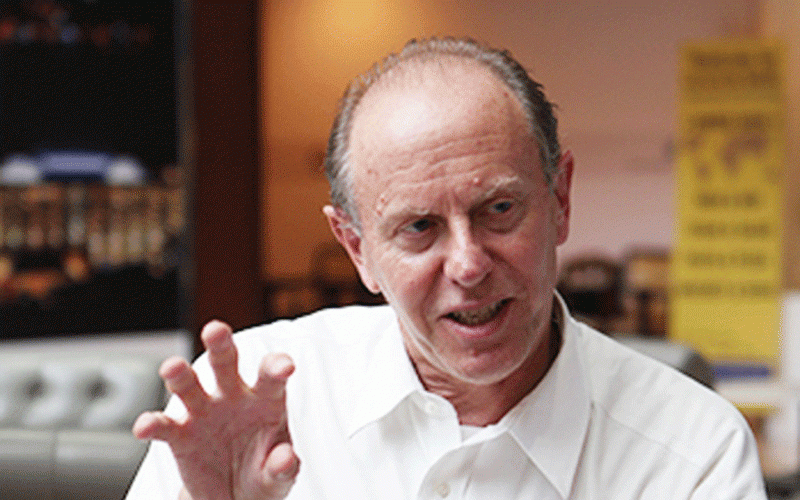
YES, you have seen men and women at work digging trenches and laying cables parallel to major highways from Windhoek and Swakopmund, Namibia.
Even within the cities and towns you have seen yellow, red or blue pipes being buried underneath the ground. This is laying of fibre optics.
Instead of laying copper cables, use of fibre optics offers high speeds to connect cities also they have a greater data and information carrying capacity than copper cables over long distances. Since this technology uses light to carry information it is immune from electromagnetic forces.
And theft of buried is a futile exercise unlike copper as used fibre wont fetch a dime.
In short, fibre optics technology involves uses of “hair” thin glass strands to enable communication by use of light travelling inside the tiny glass tube. This has made it possible to connect land locked Namibia to Asia, Europe and the Americas via Beira and Capetown interconnections via under sea cables.
Within urban centres this technology has enabled various telecoms companies to interconnect their base stations to their switches using fibre optics hence offering true 3G and not some 0G that some huge cellular company once sold using slower microwave links from the boosters to their switches.
For phone calls it was adequate but the upsurge of internet usage necessitated use of fibre optics. Fibre optics is not a new tech boom in Namibia as Zesa Holdings offshoot use the former’s electric grid to lay their fibre to connect to the outside world via Botswana Telecoms.
Other players laying cable for local and inter-city connectivity include MTN, Telone, Broadlands, Econet, Vodacom, Africom, Telecel, NetOne, Broadacom, Taurai wow what a list of providers for a country with about 13 million people!
- Chamisa under fire over US$120K donation
- Mavhunga puts DeMbare into Chibuku quarterfinals
- Pension funds bet on Cabora Bassa oilfields
- Councils defy govt fire tender directive
Keep Reading
So what? Fibre optics has given birth to higher speed internet connectivity referred to as broadband. Looking backwards two decades ago or so, internet access was for a privileged few in Namibia and around the globe in general.
Access was mainly via via dial up — use of land lines to connect to the internet service provider. Speeds were not as great but we could send and receive e-mails! One of the reasons why almost everyone I know is on Facebook , is because of faster internet.
Thanks to fibre optics because you can send and receive data, voice, TV and messages irregardless of your contact’s geographical location, Luton, Mbare, Mzilikazi, Sandton or Silicon Valley.
Broadband comes in different forms wired or wireless. The terms leased line, 3G, WiMax, ADSL, FTTP are different ways to deliver fast internet which would be 64 kilo bits per second and above – theoretically of course. These are access means of delivering internet to the customer premises from either a satellite hub or fibre to the under sea cable.
Of course you can have internet access right in the middle of Chimanimani mountains via a satellite dish using VSAT as long as you have electricity and a healthy bank balance you can be connected from any where, literally.
The geographical irrelevance that the internet has brought about means that telephone calls can be made at lower costs across continents. Internet telephony fired up by high speed internet circuits, you can talk to your cousin in Gauteng while in Swakopmun in the same manner that you would converse with you aunt across town — as long they also have a high speed internet connection.
Skype service works on this basis. Fibre optics and hence the Internet has made geographical location irrelevant – from a communications point of view. The cost of Internet access is going down maybe not as fast as you want, but it is.
It is a question of when, but not if the cost of cellular calls will fall as more and more people use internet telephony. In any case telephone companies route some of their voice traffic using the Internet instead of expensive satellite connections or dedicated trunks (E1s) in the case of Namibia.
The use of the Internet to carry voice is technically referred to as voice over Internet telephony (VoIP) and is forcing traditional telephony companies all over the world to remodel and reshape their business strategies. While this kind of technology will not eliminate mobile wireless (GSM and CDMA) revenues, it is a fact that it is already “eating” into them.
Watch this column where this technology will be covered in depth. Remember what e-mail and SMS did to postal services? When was the last time you saw a postman dropping a letter into your letter box?
Internet telephony can be a disruptive technology if your company “refuses” to flex with time. I have witnessed this in the United States where huge telcos like AT&T and Verizon were caught in between a rock and a hard place by this technology some five years ago.
Call centres A call centre is a system that handles incoming calls as efficiently and economically as possible. Call centres answer calls, then routes the calls to agents in a skillset that most closely matches the needs of the caller. “Press 1 to check your savings account balance, press two to cancel a pending wire transfer, press three speak with an customer services agent “.
A bank customer resident in New York calls the customer services number to make an enquiry about a pending wire transfer from London and after being greeted by an auto attendant “ Thank you for call Bank of New York your call will be answered by the next available agent” , his call is answered in the Phillipines.
The number is dialled in American, but the receiver is located thousands of miles in Asia. Why and how? Many huge companies abroad prefer to “outsource” their non-core functions like customer services support to companies off shore.
Not only is this cheaper for them, but it enables them to focus on their non core business – in this case banking. On the other hand the destination country in this case the Phillipines creates employment opportunities.
No rocket science. This set-up is the basis of a call centre to make and receive calls on behalf of huge corporations who don’t want any headaches about shipment details of their products but want to focus on what they know best.
India, Singapore, Phillipines are leading call centre providers. South Africa and Kenya are also getting into the game. Of course there is a pilot call centre in Harare that I setup to test its viability given our improved high speed internet connection.
Also bear in mind that call centres need not be restricted to taking calls from outside the country. You can setup your own call centre for your business at reasonable cost as long as you have reliable , fast Internet and electricity. Otherwise you will be committing “business suicide “ to totally rely on Zesa to power you up — just a fact.
Lets rewind up again by giving a practical example. The same bank customer’s call from New York could be routed to a trained agent at a call centre in Plumtree, Masvingo, Kariba or Mutare! As long as there is high speed internet, powered by fibre optics you don’t have to set it up in the crowded “Sunshine City”.
In smaller towns your rentals, rates and wages are likely to be much lower, while still tapping off from the same fibre optic “pipeline” that feeds Harare. In fact Mutare is nearer to the Beira undersea interconnection than Harare, so is Beitbridge to Durban. I used to think this was common sense.
Namibia: Putting the pieces together Easier said than done. High Unemployment Levels. Fibre Optics. Improved Internet speeds. High Literacy Levels.
English language fluency One needs not be an MBA guru to connect the dots. The writing is on the wall. If strongly “accented” others in the east can do it we can “did” it too !
There are basically two types of call centres. Inbound and outbound. An inbound call centre is setup so that call agents can take in coming calls and serves clients for the organization or for corporation based abroad. An outbound call centre does the opposite.
Corporations based in Europe can outsource marketing of their insurance services to a call centre located right in the heart of the “City of Kings”.
This is telemarketing. The use of a telephone to call potential or existing clients on new services and products in the destination market — in this case Europe. Yes, a call centre in Marondera can market new cellular services for a cellular company based in Canada. Want more examples?
A tourism company in Victoria Falls can market its resort centres, game parks and waterfalls to Japan using call centre technology which does not care about geographical location of source and destination of the call. Callers from Japan can simply dial their local Japanese number that is routed straight to your call centre location in Namibia.
Setting up a call centre A separate article on how to setup a call centre would be necessary so as to fully delve deeper into setup details and “nitty gritties”. But nonetheless this article would be incomplete if I don’t shed light on what is needed to setup a call centre.
First and foremost you must have a client who is willing to outsource their customer service chores to you, other wise you will setup set up a white elephant – no incoming calls. It is your role to get those corporations to ink an agreement for you to do their customer care services.
This will involve a lot of research and business analysis to come up with a working , fundable , manageable and profitable business case. It might mean involving an expert to scout and hook in potential corporations who want to outsource their customer care services or telemarketing services.
Technically, depending on the size of your call centre which can be made up of 10 to a 1 000 and more seats depending on the volume of your business indicated by your call volume. To simplify things I will summarise what is needed for a 10 seat call centre.
You will need internet connectivity, computers, ear pieces with microphones, desks and chairs, computer cabling, redundant power supply, relevant software, partitioned cubicles for sound proofing, a monitoring station and a coffee maker !
Bingo technically you are done. Of course you have to consult and or engage a deployment specialist who understands call center technology for deployment, operation and support.
Operation and monitoring Once your setup is complete and you are able to make and receive calls , you have to go into a testing phase where you determine your quality of service (QOS) under different load conditions like time of the day, call volume, call destination, call origination etc. This is crucial as you have to gauge and ascertain your strong combinations and weak links.
Overlooking this testing phase results in poor service punctuated by unexpected system behaviour and trends. It is very easy to lose clients due to shoddy sub standard quality assurance testing. Naturally you want to steer your call centre operation during optimal efficiency periods.
It can be a 24hr call centre or a graveyard shift call centre depending on the time zone of your client.
How well are you doing? A number of metrics in the form of graphs and logs are used to measure the efficiency and success of a call centre. The list is endless. But naturally some metrics affect the quality of your service than others.
Call quality is very important for any intelligent conversation to take place. This depends on your internet connectivity (bandwidth). If you decide to have 10 agents on a 3G wireless modem you will have an unpleasant surprise.
If you interested in setting up a call centre, comments and questions most welcome.
Mobile +263776 002 605 or e-mail [email protected]









